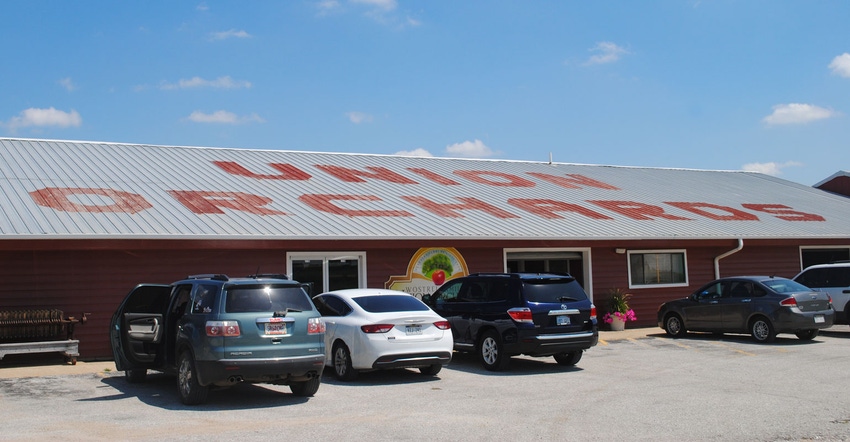
Fall is apple time, and apples and Nebraska go together. Today, we may not equate the two, but if you were farming in the 1870s in southeast Nebraska, you would agree.
Although apples assuredly were planted in the region before Nebraska became a territory in 1854, it didn’t take long after the territory opened for settlement for pioneering families from the East to bring apple tree seedlings with them to plant near their new homes.
Governor and early Nebraska Farmer Publisher Robert W. Furnas of Brownville also was president of the American Pomological Society and was an early promoter and planter of apple and orchard trees and fruit vines in the territory.
J. Sterling Morton, renowned publisher and politician, founder of Arbor Day and U.S. secretary of agriculture for President Grover Cleveland, also was a promoter of trees in general — but orchards and fruit trees in particular. Southeast Nebraska, at one time, was a base of major apple production for the state.
The Annual Report of the Nebraska State Horticultural Society for 1914 stated that the largest contiguous commercial apple orchard in the state that year belonged to E.M. Pollard at Nehawka.
Pollard, who was president of the Eastern Nebraska Fruit Growers’ Association at the time, was harvesting 40,000 bushels of apples from 160 acres of orchard. In the report, Pollard said that the apples were all picked in a sack and placed carefully in baskets measuring a bushel and a half.
Those baskets then were placed on a low-wheel wagon with a flat rack over springs to prevent any bruising of the fruit. Each wagon could hold 45 baskets. The wagons hauled the apples to a packing house near the spur of a railroad. Apples were graded by hand, placed in barrels and loaded directly onto a rail car. The cull apples were ground into cider.
That same report estimated the 1914 apple crop in the state to be close to 1.6 million bushels. Crop harvest totals from previous years had the 1911 apple crop as high as 5.1 million bushels, and as low as 409,000 bushels in 1913.
Like today, the varied harvests were attributed to highly variable weather conditions in the spring and summer months.
With that kind of heritage, it isn’t a surprise that farms across the state still have small, private orchards for their own use. Commercial apple orchards still flourish around the state, but particularly in the southeast.
Union Orchard for instance, just north of Nebraska City near Union, originally was the University Fruit Farm. It was founded in 1917 by the University of Nebraska as a demonstration fruit farm that could be run as a commercial orchard.
It grew into an 80-acre demonstration site for not only apples, but also for cherries, peaches, pears and plums, as well as grapes, gooseberries, currants, raspberries, strawberries and blackberries. UNL sold the farm in 1961, when it became the Lechner Families Union Orchard.
In 2011, the orchard was purchased by Terry and Carla Wostrel, owners of a farm family with pioneering roots in Cuming County. The orchard has not only continued with apples, but it also provides an orchard experience with events, a country store and the ability to host tours and school field trips.
While this is only one example of modern commercial orchards in the state, it is evidence that Nebraska’s orchard industry continues, built upon a strong foundation that began well over a century and a half ago.
About the Author(s)
You May Also Like






